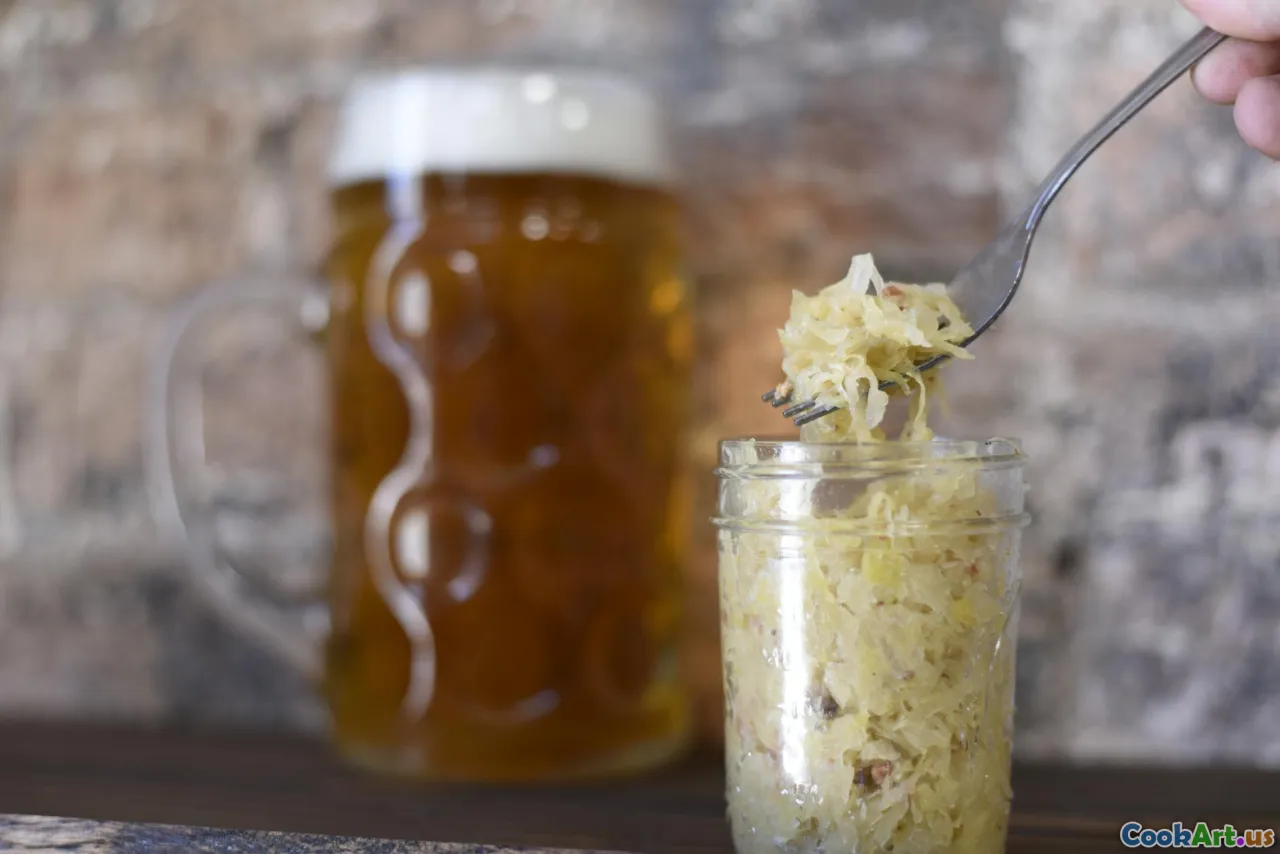Sauerkraut Fermentation Methods for German Flavor
7 min read Discover the art of fermenting sauerkraut to unlock authentic German flavors, exploring methods, cultural significance, and personal tips. April 28, 2025 15:00
Sauerkraut Fermentation Methods for German Flavor
Introduction: A Journey into the Heart of German Culinary Heritage
Imagine walking through a bustling German market, the air thick with the tangy aroma of fermenting cabbage. The vibrant, tart scent of sauerkraut isn’t just a flavor; it’s a cultural emblem, a testament to centuries of tradition and ingenuity. Fermentation, in its essence, is a magic that transforms humble ingredients into complex, flavorful delicacies—none more iconic in Germany than sauerkraut.
But what makes sauerkraut truly special isn’t just its sour punch or crisp texture; it’s the story it tells—of seasons long gone, of family recipes passed down through generations, and of the natural alchemy that turns cabbage into a probiotic powerhouse. Whether you're a seasoned fermenter or a curious newcomer, mastering the methods of sauerkraut fermentation opens a door to authentic German flavors that can elevate your culinary repertoire.
In this article, we’ll explore the rich tapestry of fermentation techniques, delve into cultural and historical nuances, and share personal insights that make this simple dish an extraordinary experience.
The Cultural Significance of Sauerkraut in Germany
A Historical Perspective
Sauerkraut’s roots stretch deep into European history, with evidence suggesting its origins trace back thousands of years. German peasants and farmers relied on it as a vital source of vitamin C during long, harsh winters, preventing scurvy and ensuring survival. The preservation method—fermentation—allowed cabbage to be stored safely for months, providing nourishment when fresh produce was scarce.
A Cultural Staple
In Germany, sauerkraut isn’t just a side dish; it’s woven into the national identity. From hearty bratwurst and Schweinshaxe to regional specialties like Saarland’s saurefleesch, the tangy cabbage complements robust flavors and hearty meals. Its presence at festivals, family gatherings, and traditional Christmas dinners underscores its cultural importance.
Emotional and Social Connection
Fermenting sauerkraut is often a communal activity, a ritual passed down from generation to generation. It’s about more than food—it's about preserving heritage, sharing stories, and creating bonds around the bubbling jars and fragrant kitchens.
The Art and Science of Fermentation: Methods and Techniques
Basic Principles of Sauerkraut Fermentation
At its core, sauerkraut fermentation is a process of lacto-fermentation, where naturally occurring bacteria convert sugars into lactic acid. This acid creates an environment inhospitable to spoilage organisms, preserving the cabbage and developing its characteristic tang.
Essential Equipment and Ingredients
- Cabbage: Fresh, crisp, and preferably organic.
- Salt: Traditionally, sea salt or non-iodized salt to promote healthy fermentation.
- Containers: Fermentation crocks, glass jars, or food-grade plastic containers.
- Additional Flavors (optional): Caraway seeds, juniper berries, garlic, or apples for nuanced flavors.
Step-by-Step Basic Method
- Preparation: Remove damaged outer leaves, then shred the cabbage finely.
- Salting: Mix shredded cabbage with salt (about 2% of the cabbage weight). Massage thoroughly until juices are released.
- Packing: Firmly pack the salted cabbage into your fermentation vessel, pressing down to eliminate air pockets.
- Weight & Cover: Use a weight to keep the cabbage submerged beneath its brine, then cover with a cloth or fermentation lid.
- Fermentation: Allow to ferment at room temperature (65-75°F) for 1-4 weeks, tasting periodically.
- Storage: Once the desired flavor is achieved, store in a cool, dark place or refrigerator.
Variations & Advanced Techniques
- Kraut with Add-ins: Incorporate spices, fruits, or vegetables for regional or personal twists.
- Using Starter Cultures: For consistent results, some fermenters add specific probiotic cultures.
- Temperature Control: Maintaining optimal temperature ensures predictable fermentation and flavor development.
Modern Innovations & Tips
- Sous Vide Fermentation: Using controlled water baths for precise fermentation temperatures.
- Fermentation Vessels with Airlocks: Minimize contamination and allow gases to escape.
Personal Insights & Tips for Perfect Sauerkraut
Choosing the Right Cabbage
Opt for fresh, firm heads of green or white cabbage. Organic varieties tend to ferment more predictably and develop richer flavors.
Salting & Massaging
The key to crisp, flavorful sauerkraut lies in thorough salting and massaging, which encourages juice extraction and creates an ideal environment for fermentation.
Patience is Key
While some quick ferments can be ready in a week, authentic flavor often develops over several weeks. Be patient—your taste buds will thank you.
Tasting & Adjusting
Start tasting after one week. If the flavor is tangy and complex, it’s ready. If you prefer more sourness, let it ferment longer.
Troubleshooting
- Mold or Scum: Remove surface mold, ensure cabbage stays submerged.
- Off-Smell: Discard if off-putting; proper salt and cleanliness help prevent this.
Final Thoughts: Embracing the Fermentation Journey
Mastering sauerkraut fermentation is more than a culinary skill; it’s an act of cultural preservation and personal expression. The process is meditative—listening to the bubbling, smelling the evolving aroma, and witnessing the transformation of humble cabbage into a probiotic treasure.
Whether you’re aiming to recreate traditional German flavors or experiment with your own twists, embracing these methods connects you to centuries of culinary history. So grab your cabbage, salt, and a glass jar—your journey into the heart of German gastronomy begins here.
Venture beyond the supermarket shelf and craft your own tangy, crunchy sauerkraut—your taste buds and heritage will thank you.
Happy fermenting!









